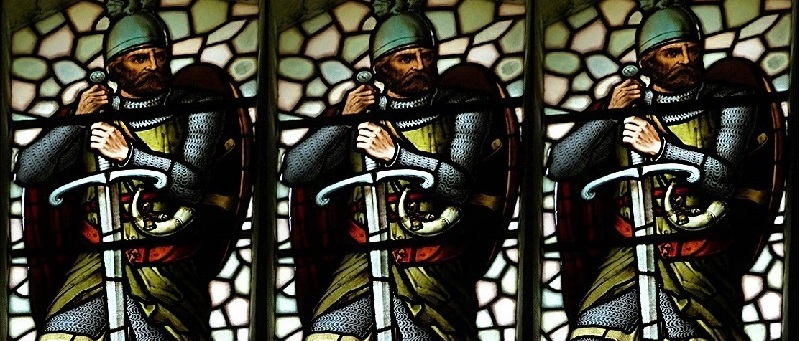William Wallace
Posted on 8th January 2021
William Wallace was born around 1272, probably in Renfrewshire, Scotland; his true parentage is unknown. He was born during a period of peace between Scotland and England however this was to change following the death of King Alexander III of Scotland on 19 March 1286.
Alexanders heir to the Scottish throne was his grand-daughter Margaret of Norway, but she died on the voyage to Scotland in 1290.
Several people now laid claim to the Scottish throne, and Edward I of England was asked to mediate. Eventually Edward chose John Balliol and he was crowned King in 1292, however Edward still wanted to exert power and influence over Scotland, causing a rift between the two. John Balliol was later imprisoned in the Tower of London.
Edward required Scottish nobles to swear allegiance to his sovereignty, many refused and an uprising began. During the First War of Scottish Independence, Wallace carried out the assassination of the High Sheriff of Lanark, William Heselrig in 1297.
On 11 September 1297, an army led by Wallace and Andrew Moray fought at the Battle of Stirling Bridge. The English army led by John de Warenne, 6th Earl of Surrey vastly outnumbered the Scottish forces of Wallace, however the English suffered a crushing defeat; following this Wallace led raids into Northumberland and Cumberland in northern England.
In late 1297 Wallace was Knighted and became Guardian of Scotland.
In April 1298 Edward invaded Scotland again, leading to the Battle of Falkirk on 22 July 1298, an English victory. The reputation of Wallace as a military leader was badly affected by this defeat, but he managed to escape after the battle.
Little is known of his life for the next few years, although there is speculation that he may have travelled to France to gain support for his rebellion.
Having returned to Scotland by 1304, Wallace was later captured in 1305 by Scottish Knight John de Menteith, who traitorously turned him over to English soldiers at Robroyston near Glasgow. He was transported to London and tried for treason on 23 August 1306 at Westminster Hall. He denied the charge, stating that he had never sworn allegiance to the English crown, however he was convicted of the charge, then executed, being hanged, drawn and quartered.
Tagged as: Junior Middle Ages
Share this post:





